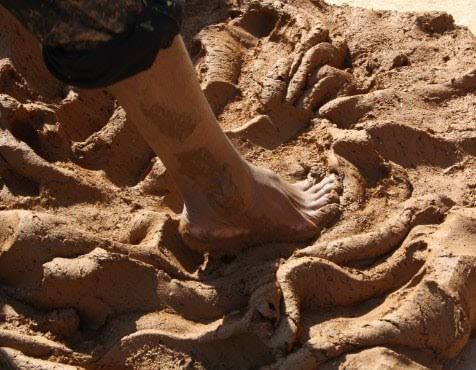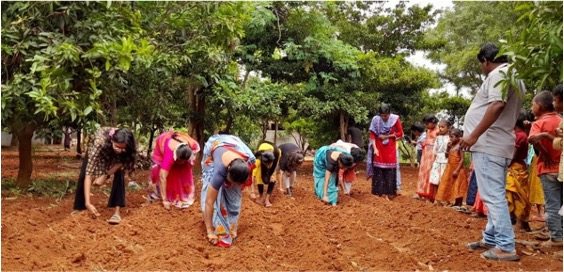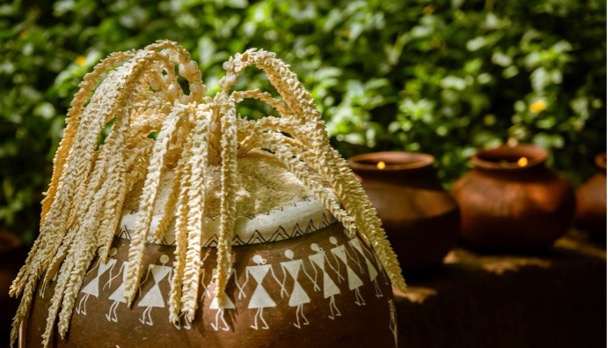Any sculptor or potter will tell you that 25 per cent of their art lies in preparing clay – the material for creating these structures and objects. Clay is derived from soil, and soil is the blood of the Earth as it is enriched with flora and fauna, and covers the entire planet. In fact, terra cotta artefacts from early civilizations stand to date in our museums.
True artists like to own their work completely – right from inception. Just like you learn words before you make a sentence, you should learn to make clay before you make a sculpture.
The clay used for sculpture and pottery is different as their firing temperatures differ.
Sourcing Clay
Lake Doddagubbi is just a few kilometres from the Visthar campus. So we are lucky to be able to get natural clay-rich soil from a river bank. You can get clay by removing as little as six inches of topsoil. The quality of clay will be different if you dig deeper. It’s good to use both types of clay to get plasticity otherwise, items can break while moulding.
We select the soil by feeling and even tasting it. In touch, clay should be sticky and taste peppery or salty. The iron oxide in the clay gives it a peppery taste. I have heard people say that once upon a time, decades ago, the clay from Doddagubbi’s bank used to taste chocolatey.
Preparing Clay
The chunky pieces of soil have to be pounded and broken down into finer particles. After that has been done you add sawdust, charcoal powder, gunny bag dust, cotton dust, rice grass, elephant grass, paddy, and sawdust – these are non-sinkable materials.
Other materials to add are broken mud pots, sand, brick powder, and terracotta tiles powder. These components create density and strength. Things that have already been baked lend hardiness and durability to the product.
We can even add charcoal powder to the clay mixture. While the clay is baking the carbon component burns and flows within the structure and enables the even distribution of heat. Otherwise, the clay object could burst.
As the height of the object increases the composition of the clay also changes.
The clay with the added components is put in a container and then covered with water. It should be kept in water for eight to 21 days and should be turned twice a day. After that the soil is sieved and the clay extracted. You can go up to any amount of washing and sieving cycles. But three is the minimum.
The extracted clay should be dried out. But it should not be exposed to sun and wind while drying. You can leave it in the shade or cover it with a protective cloth layer. This helps strain out any remaining moisture from your clay. You can even hang it from a tree to drain excess moisture.
Once the clay has dried, you have to knead or stamp on the clay, depending on the size. This helps with mixing it evenly.
Clay Therapy
And if you thought you were just making clay, think again. You are coming into contact with Mother Earth while stamping the clay or kneading it. Electromagnetic energy is entering your body through your hands and feet. This activity calms you down and purifies your blood.
(Arun Kumar Yadav is a visual artist and Assistant Professor at Visthar Academy of Culture and Contemporary Studies.)





